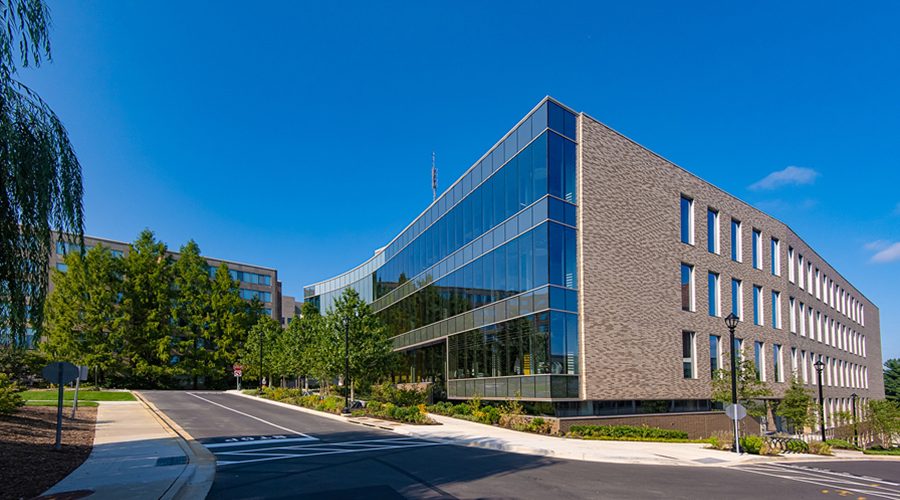Spurring innovation and collaboration between scientists to enhance the student experience was front of mind when American University in Washington DC planned to build a new faculty to house its science programmes.
Pilkington Glass
And as the building will be aiding research into topics including climate change, ensuring that the new facility was environmentally friendly was a key part of the brief.
In fact, the university wanted its new Hall of Science to achieve Leadership in Energy and Environmental Design (LEED) Gold, a certification that demands that operational carbon emissions for the finished building are kept below a certain level.
The three-storey, 95,000 Gross Floor Area (GFA) building relocates the university’s biology, environmental sciences, chemistry, and neuroscience departments into a modern, central location within the institution’s campus.
In order to provide the academics and students using the building with natural light, the architect, Ballinger, designed a full-height glass wall along its campus-facing edge.
However, the area of glazing created a challenge – the potential for excess heating as a result of the large amount of energy streaming into the building as sunlight.
If this effect was too great, the increased dependence on air conditioning during the summer months would have enlarged the building’s carbon footprint, threatening the LEED certification, and made controlling the climate in the building more expensive.
The appliance of science
In keeping with the building brief of innovation, to combat excessive solar gain, the architect turned to Pilkington United Kingdom Ltd, part of the NSG Group, and specified Pilkington Suncool™ 50/25 T glass within the insulated glass units across the whole façade, supplied by Pilkington UK partner CareyGlass.
Using an advanced off-line coating technology the high performance solar control coating helps to reduce the amount of solar energy that passes into the building by up to 75 per cent.
At the same time, the glass maintains natural colour balance and still allows natural light to flood the building.
Stephen Bartlett, AIA, LEED AP, principal at Ballinger said: “American University wanted a highly transparent building that would visibly showcase science laboratories to the surrounding campus. We wanted a neutral colour glass that would be neither green nor visibly reflective. Providing transparency along with solar heat gain control was key to meeting our energy use targets and achieving LEED Gold.
“The resultant laboratories are bathed in natural light without harsh glare and provide abundant views onto the surrounding natural landscape. This creates a calm and pleasing research environment that fosters focus and concentration. We are impressed by both the performance and aesthetics of the Pilkington Suncool 50/25 T product.”
William Carey, CEO at CareyGlass, said: “Collaboration has been key to many aspects of this project. While creating a collaborative space was important in the American University’s design brief, it’s also been essential for all suppliers, consultants and contractors involved to work closely together and find solutions to meet the requirements of this stunning new building.”
Jason Eggerton, specification sales manager Pilkington UK, said: “The American University is one of many exciting international projects that we’re supporting from our advanced coating and manufacturing facilities in the UK.
“Supplying projects in the UK, and globally, the major investment in manufacturing facilities and product development within St Helens is helping bolster the town’s presence and status as the true home of glass.”







